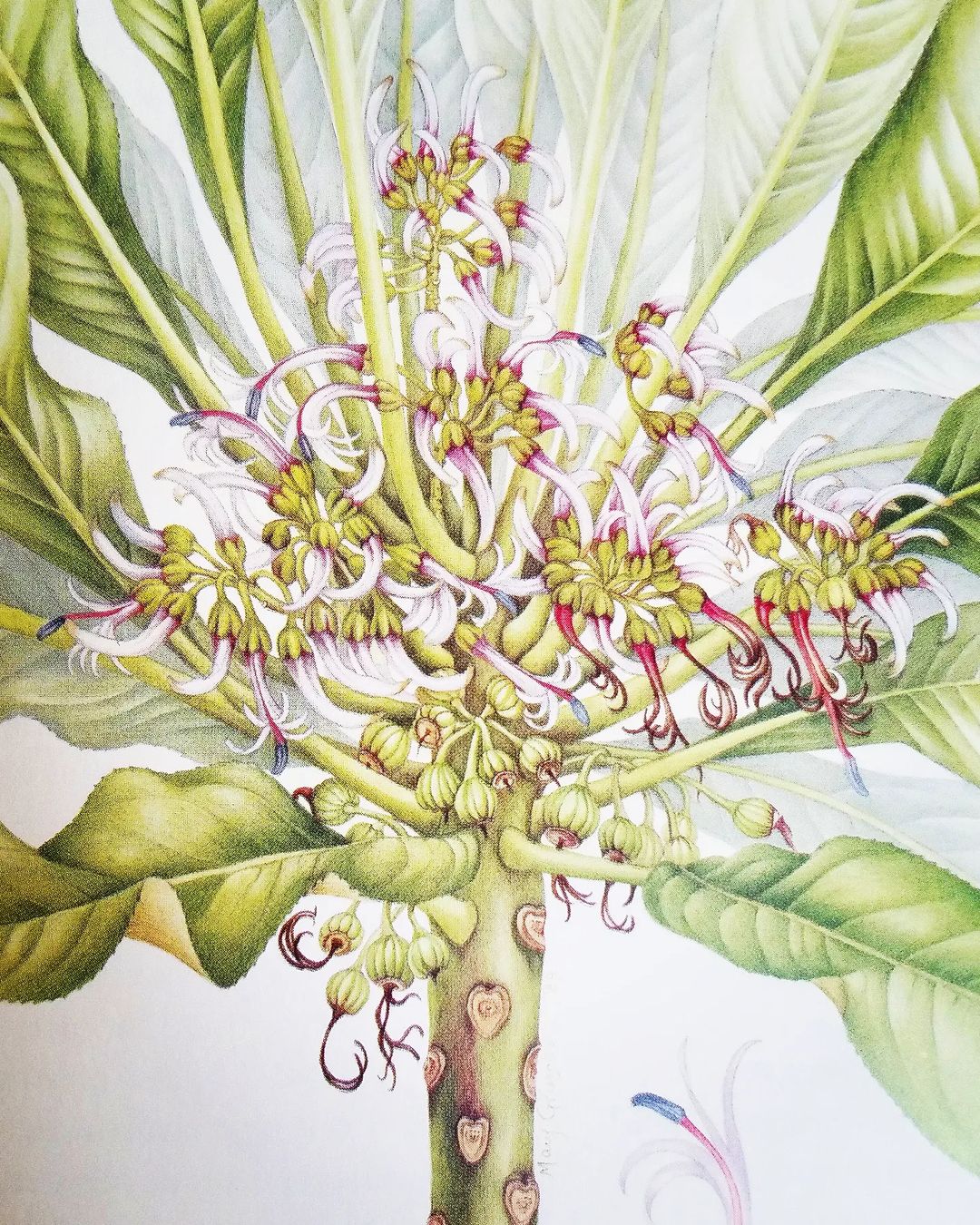The Instagram Account Archiving The Botanical Splendour Of Hawaii
By Something CuratedHelmed by botanical enthusiast Allison Baird, Instagram account @hawaiinativeplants is a celebration of the verdant diversity of Hawaii. Located in the Pacific Ocean about 2,000 miles from the US mainland, the state comprises nearly the entire Hawaiian archipelago – 137 volcanic islands spanning 1,500 miles that are ethnologically part of the Polynesian subregion of Oceania. The islands of Hawaii are distant from other land habitats, and life is thought to have arrived there by wind and waves, as well as on the wings of wandering birds and insects carrying seeds.

The majority of Hawaiian plant species are found nowhere else in the world. Historically, each island supported varied and distinct native plant life; however, Hawaiian plants have been replaced, displaced, or otherwise forgotten from many areas where they formerly thrived, with hundreds of species now on the verge of extinction. In fact, Hawaii has more endangered species and has lost a higher percentage of its endemic species than any other US state. The endemic plant Brighamia, for example, now requires hand-pollination by conservationists because its natural pollinator is presumed to be extinct.

@hawaiinativeplants beautifully chronicles the vegetal splendour of the region, oscillating between scanned images and botanical illustrations, all thoughtfully captioned with each plant’s Latin and Hawaiian names. Recent highlights include the striking Capparis sandwichiana, or Maiapilo in Hawaiian. Baird elucidates: “Some of the largest, most beautiful, and best smelling flowers in Hawaii belong to this uncommon coastal plant, a relative of the caper berry. It blooms only at night, with the delicate flowers withering and turning pink shortly after sunrise. While the flowers smell lovely, the fruit is another story; it has a strong putrid smell – “pilo” means stinky.”

Keep scrolling to discover the spectacular Āhinahina, scanned by Baird from a vintage postcard. The extraordinary silversword variation is found on the island of Maui at elevations above 2,100 metres on the dormant Haleakalā volcano – on the summit depression, the rim summits, and surrounding slopes – in Haleakalā National Park. The plant’s base of leaves, arranged in a spherical formation at ground level, dominates for the majority of the plant’s life, which may be greater than 50 years. “Summer is peak blooming season for these incredible plants,” Baird notes. “Āhinahina flower stalks can reach heights up to 9 feet and contain up to 600 individual flower heads,” she adds.

Expanding on the use of a particularly durable indigenous plant, Baird shares: “Exceptionally fine cordage can be made from the inner bark of Touchardia latifolia (Olonā), found only in the Hawaiian islands. Very strong and light, it has traditionally been used for making fishing line, nets, the base of feather goods such as ʻahu ʻula (capes) and mahiole (helmets), as well as general lashing and tying – sort of the duct tape of its time. When used to make fishing nets, Olonā was often combined with floats made of lightweight, buoyant wood like Wiliwili or the Polynesian-introduced Hau. Because of its many practical uses, from the royal to the mundane, it was widely cultivated in older times, with some Olonā plantations covering acres of land.”

Further down @hawaiinativeplants’ feed, Baird posts a beautiful illustration of the Heliotropium curassavicum, known by Kīpūkai in Hawaiian. “This sprawling plant has a tolerance for salty conditions, making it a common find in coastal locations and salt marshes,” she points out. Baird continues, “Like many other Hawaiian plants adapted to harsh full sun conditions, its leaves are a silvery green grey colour. While the individual flowers are small, they grow together on stalks and tend to bloom en masse, forming a lovely mat of pale flowers with the greyish green foliage as a background. Its seeds have the ability to float, enabling its dispersal to varied places like the Caribbean, Australia, the Americas, and of course Hawaii.”
Feature image: ʻŌhiʻa Lehua. Photo: @hawaiinativeplants